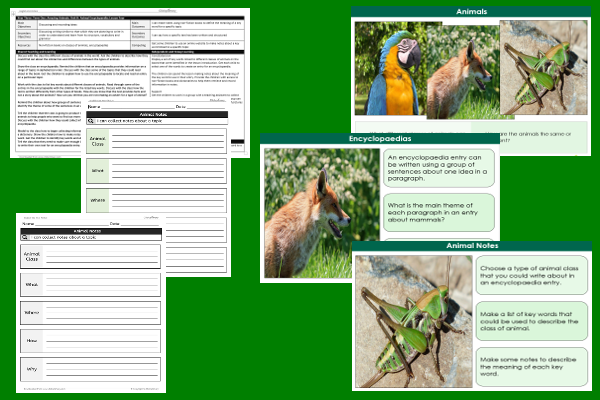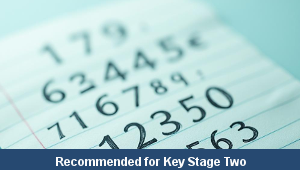Lesson Four – Animal Notes

This English teaching pack for Key Stage Two gets the children to practise researching and recording facts and information about a specific class of animal to use when composing an example encyclopaedia entry.
The class can explain and model how to search for and retrieve information in a non-fiction text to answer a key question on a specific class of animal such as amphibians and insects.
Download this teaching pack including a lesson plan, classroom activities and an interactive presentation to practise researching and recording facts and information about a specific class of animal to use when composing an example encyclopaedia entry
Activities in this teaching pack include a template to select and record abbreviated notes to answer some different key questions about a specific class of animal to use when compiling facts and information into a matching entry for an encyclopaedia.
The interactive presentation gets the children to explore how to research and record information about a class of animal to use when composing an encyclopaedia entry.
This lesson is part of an English scheme of work to get the children to design and produce a class encyclopaedia including entries and information about different classes of animals, match prefixes and word roots, learn how to retrieve information from non-fiction texts and link sentence clauses using conjunctions. There are teaching activities for shared learning, differentiated worksheets to support independent learning and interactive presentations to introduce concepts and key skills.
-

Maths Arithmetic Assessment
Assess abilities in solving arithmetic number problems for addition, subtraction, multiplication and division when working with informal and formal written calculations
-

Environment
Identify and describe some of the special landscapes and locations that can be found in the world and reflect on how they can be protected and preserved for the future
-

Silent Letter Words
Explore and illustrate the meanings and spellings of some different words with silent letters when using them in a range of topics and scenarios
-

Complaint Letters
Explain and model how to format and structure writing when composing letters of complaint about different issues and scenarios
